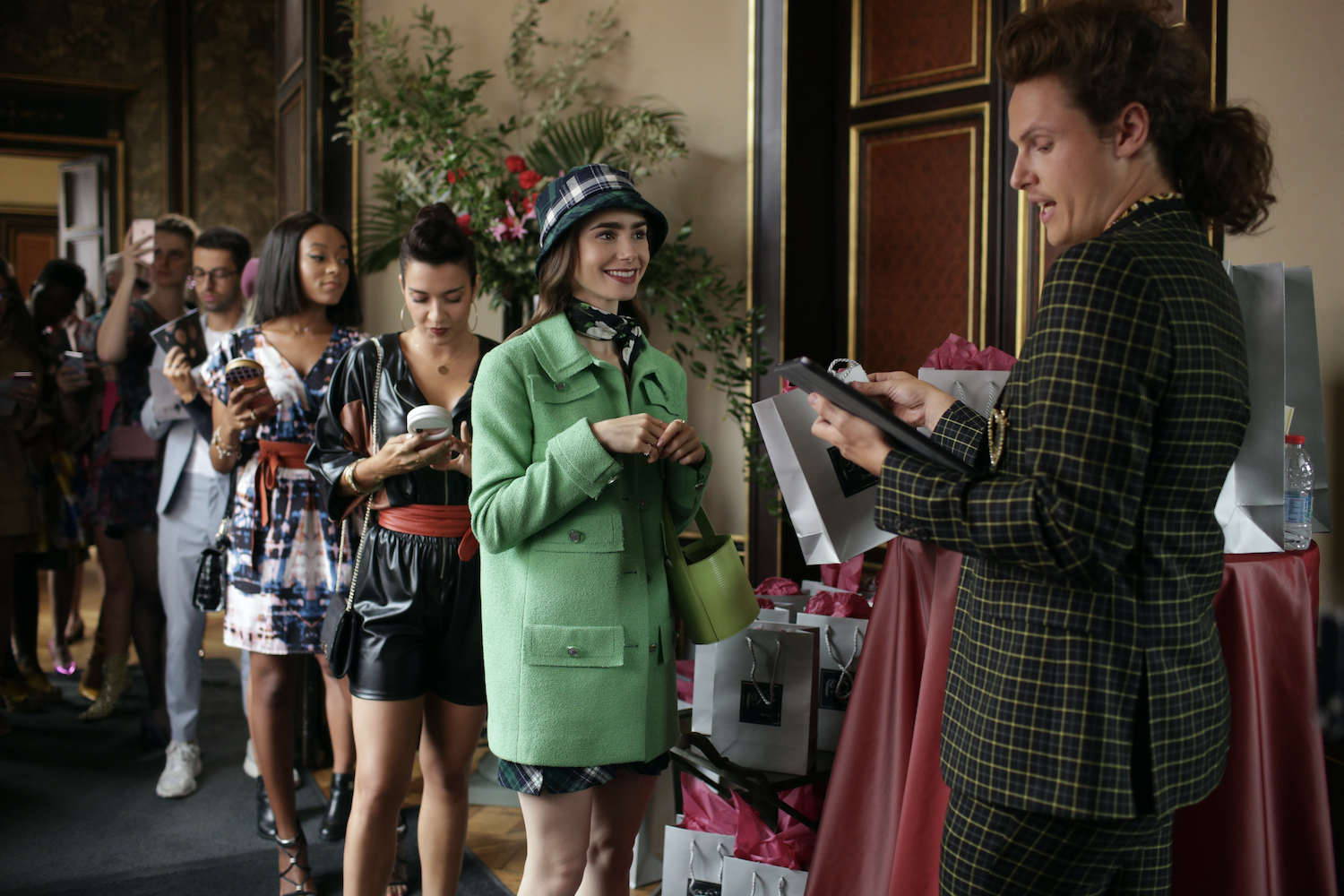On Netflix’s “Emily in Paris,” the insatiable sex drive of Frenchmen, the ‘cigarettes for lunch’ smoking culture, and the blasé attitude of Parisian natives are showcased like French staples on the glossy pages of a travel brochure. It is the idealized world that makes the show worth watching, not its awkward cultural commentary or problematic plot.
The series is full of such Parisian clichés. From an entertainment perspective, the show is pure “confection” as protagonist Emily Cooper would say, sweeping viewers into a whirlwind of love affairs and workplace drama.
Emily Cooper is a social media strategist who moves from Chicago to Paris to work for Savoir, a fictional French luxury marketing company. With no understanding of the language or the culture, she is called le plouc (the hick) by her French colleagues and boss Sylvie Grateau, who plots to ship her back home.
Despite being alone (and single), Emily makes friends out of strangers in Paris, such as Mindy Chen, an heiress-turned-nanny and Gabriel, an up-and-coming chef and Emily’s on-and-off lover.
To top it all off, she documents all of her Parisian adventures through the rose-coloured lens of a foreigner via her trending Instagram account @emilyinparis, making her a low-tier social media influencer.
A privileged perspective
“Emily in Paris” is an exaggerated reality of a foreign expat, albeit a well-off one, and no matter how hard she tries to project her ‘workaholic’ attitude towards her career or her humble Chicago origins, there is an undercurrent of privilege, and pure luck, in the job opportunities she has been given. If only the mention of Gossip Girl could land a world-famous client for all of us like it did Emily in episode six!
Created by “Sex & the City” writer Darren Star, “Emily in Paris” can best be described as a cross between “Gossip Girl” and “the Devil Wears Prada,” but less iconic.
Emily’s outfits emulate Blair Waldorf’s style, with her quirky berets, Christian Louboutin pumps and Chanel mid-length coats. My personal favourites include her canary-yellow handbag from episode one and a “Black Swan” inspired gown worn at l’Opera Garnier in episode six.
Living in Paris is an expensive affair and for a junior executive, Emily is loaded. How else can she afford shopping sprees to Chanel, numerous outfit changes per episode (no repeats!), and her restaurant bills, which always include a bottle of fine wine? Per episode, Emily is spending an estimated $20,000 to $36,500.

While securing business deals with acclaimed perfumer Antoine Lambert and Mathieu Cadault, who is heir to his father’s atelier, both men expressed genuine interest in her American perspective. Both conversations were also sexually suggestive—leading the viewer to question whether it is physical attraction or hard work that plays a major important role in Emily’s success.
In an attempt to stay ‘woke,’ “Emily in Paris” also features discussions regarding sexism and female sexuality in the episodes “Masculin Féminin” and “Sexy or Sexist.” These episodes cast a negative light on French attitudes towards women and workplace etiquette. The French may be passionate and sexually upfront people, but is it typical in France for a client to gift lacy lingerie? Is it typical for a French rental agent to push for a date after handing you the keys? Do the French not understand how a nude model walking amongst fully clothed men for a perfume campaign can be controversial, regardless of it being objectification or empowerment? None of this may be true, but for an outsider to French cultural nuances like me, this patriarchal attitude comes across as if it were the French standard.
Cultural Division
Both America and France are portrayed in a blatant representation of the cultural divide, but while the Americans come across as revolutionaries, the French are portrayed as elitist.
Emily is not the ideal candidate for the Paris job, despite the added promotion. As her boss Sylvie mentions, the audacity of her to arrive in a foreign country for work, without learning basic, conversational French is both inexplicable and unrealistic.
Emily constantly complains about feeling like Alice in “Alice Through the Looking Glass” in Paris whenever the language barrier confronts her, but how naïve can a 20-year-old executive be? She may be trying to understand Paris better, but in actuality, Paris is trying to better understand her, despite her choppy accent.
Pure Confection
The series is a visual treat, especially when cooped indoors during the pandemic, with shots of historical cafés, boulangerie-fresh pain au chocolate and iconic Parisian spots like the Pont Alexandre III.
I’m more than willing to look past the social controversy of the show, and instead check out the visual treats such as the good-looking cast and the beautiful views of “Emily in Paris.”
Featured image from IMDb.






